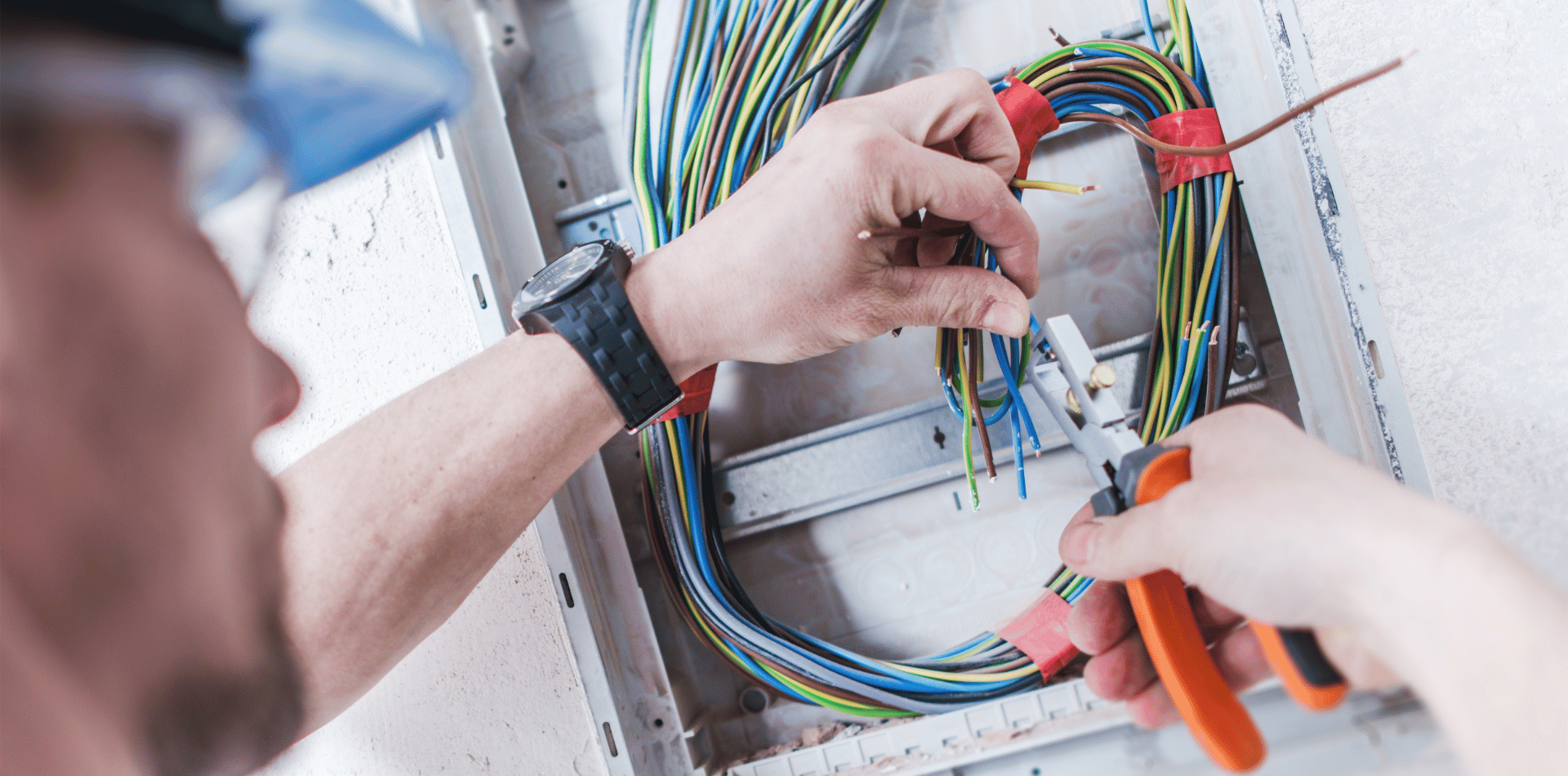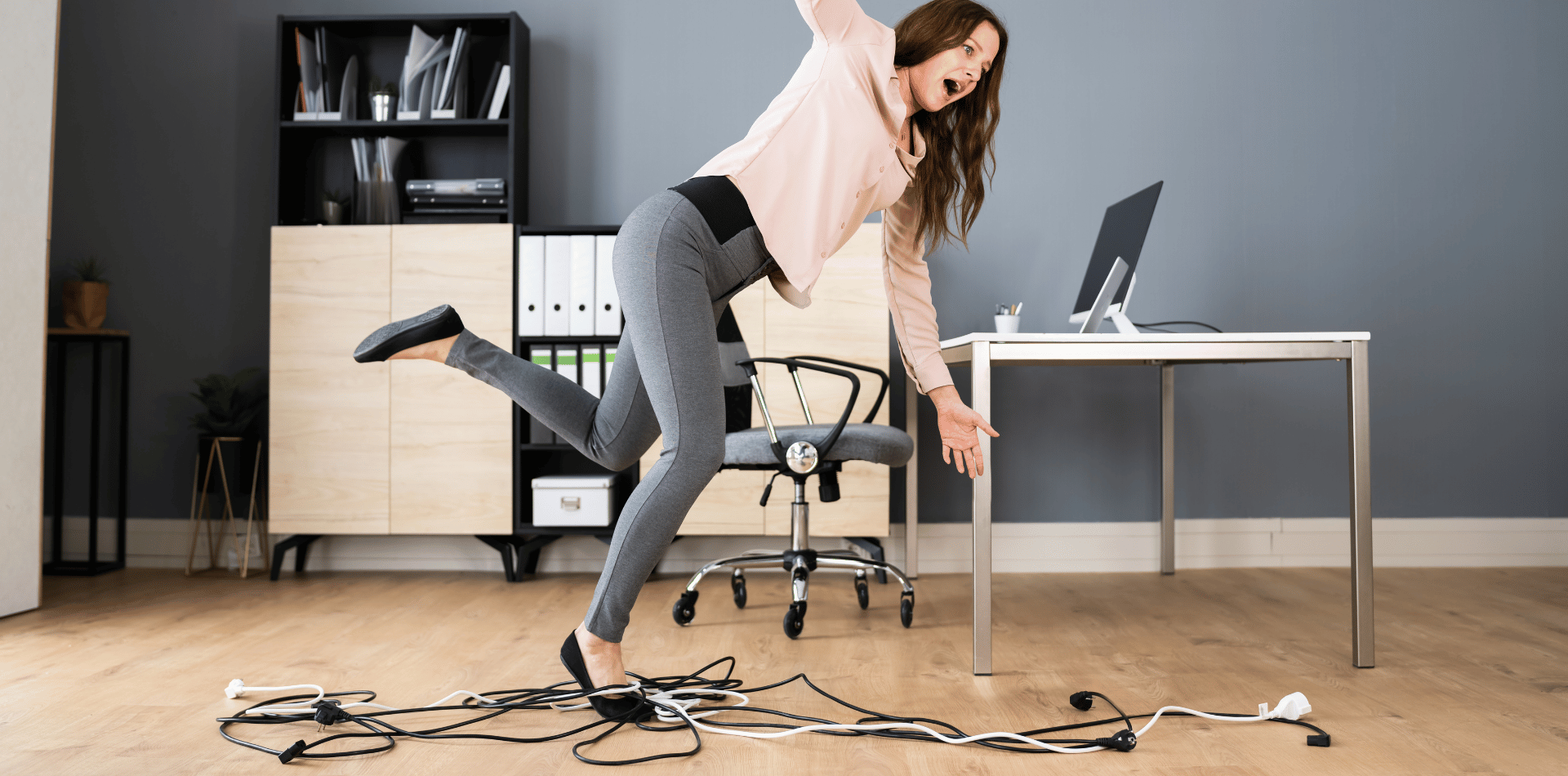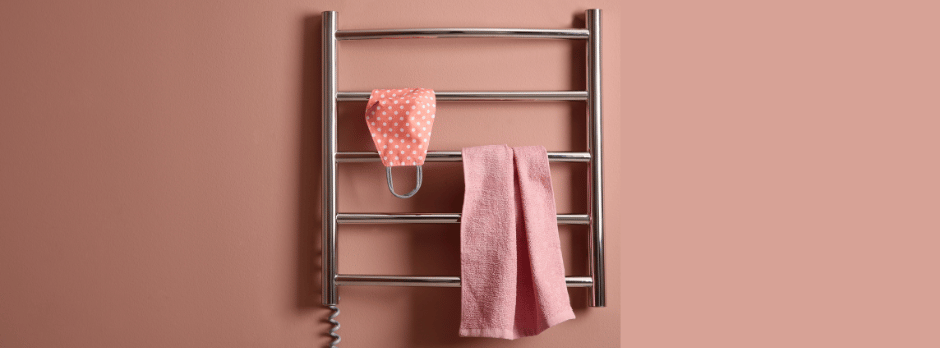Important Electrical Safety Tips Every Homeowner Should Know
Important Electrical Safety Tips Every Homeowner Should Know

Electricity is an integral part of our daily lives, powering everything from our laptops to our lights.
If not handled properly, it also poses significant risks.
We all need to have an understanding of electrical safety and the crucial measures to prevent accidents and ensure a safe living environment.
Understanding Your Home's Electrical System
As a homeowner in Australia, it's important you understand the basics of your home's electrical system.
It's not just about managing your energy consumption more effectively; it's also crucial for ensuring the safety and efficiency of your household.
Here's some basic things you should understand about your electrical setup:
1. Locating Your Breaker Box
The first step is locating your home's breaker box, which in Australia, is also commonly referred to as the switchboard.
Typically, it's found in an easily accessible area such as the garage, laundry room, or outside the house. In most cases, it’s located in the garage. Make sure that the area around the switchboard is clear of obstructions to allow easy access in case of an emergency.
2. Understanding Circuit Breakers and Safety Switches
Australian homes are equipped with circuit breakers and safety switches, which are essential for preventing electrical accidents. Circuit breakers protect circuits from becoming overloaded and potentially causing a fire. They trip and cut off the electricity if too much current flows through them. On the other hand, safety switches monitor the flow of electricity through a circuit and shut it off immediately if they detect a leakage to earth, which can happen if someone touches a live component.
You should familiarise yourself with which circuit breaker corresponds to which area of your home. This is particularly important during power outages or when certain repairs are needed. Also check that the safety switch is functioning correctly by performing the test button routine every three months, as recommended by Australian standards.
3. Labelling the Electrical Panel
You may find that your electrical panel wasn't properly labelled, which is a common issue in many homes. You should take the time to identify each circuit and label them accordingly. This involves switching off one breaker at a time and checking which lights or outlets stop working. It can be a bit time-consuming, but you should know exactly which switch controls each part of your house. This is incredibly useful for troubleshooting and in emergencies.
4. Regular Inspections and Maintenance
In Australia, it's recommended to have your electrical system checked by a licensed electrician at least once every ten years, or if you've purchased a new property, to ensure everything meets the current electrical standards (AS/NZS 3000). You should make a note to schedule these inspections and also to perform your own regular checks for any visible signs of wear and tear, such as damaged wires or malfunctioning outlets.
5. Educating Your Family
You should take the time to educate your family about the basics of your home’s electrical system. This includes showing them how to safely reset a tripped circuit breaker and explaining the importance of not overloading power boards or outlets, which is a common cause of home fires in Australia.
6. Knowing When to Call a Professional
While you should have made an effort to understand your home's electrical system, you should also aware of your limitations. For any issues beyond basic troubleshooting, the safest measure is to call in a licensed electrician. Australian electrical standards are strict for a reason – they keep us safe. So, for anything that seems out of your depth, don't hesitate to seek professional help.
Understanding your home's electrical system will not only made you more energy-efficient but will significantly improve the safety of your household. By familiarising yourself with the location and function of your breaker box, labeling the electrical panel, and educating your family, you will have taken crucial steps to ensure your wellbeing.
Regular Inspection of Electrical Cords and Outlets
Regular inspection of electrical cords and outlets is a crucial safety measure for every Australian household.
Given the potential risks associated with damaged wiring and overloaded power points, it's imperative that homeowners adopt a proactive approach to electrical safety.
Here’s what you should consider during your routine checks:
Inspecting Electrical Cords
You should regularly inspect all electrical cords in your homes for signs of wear and tear. This includes looking for fraying, cracks, or any signs of overheating such as scorch marks or melted insulation. Electrical cords can become damaged over time due to bending, pulling, or heavy usage, which can pose serious fire hazards or result in electric shocks.
It is important to ensure that cords are used as intended: those designed for indoor use should not be used outdoors where they could be exposed to harsh weather conditions. Conversely, outdoor cords, which are built to withstand moisture and temperature variations, should be the only type used in outdoor settings. If any damage is detected, the cords should be replaced immediately to prevent accidents.
Checking Electrical Outlets
In addition to cord inspections, checking electrical outlets regularly is equally vital. Homeowners should ensure that outlets are not overloaded—a common issue in many households where multiple devices are connected to a single outlet via double adapters or power boards. Overloading outlets can lead to overheating and potentially cause fires.
Outlets should be checked for warmth or discolouration, which can indicate underlying electrical problems such as faulty wiring or an overloaded circuit. If these signs are present, it’s advisable to cease using the outlet and consult a licensed electrician for a thorough assessment and necessary repairs.
Ensuring Proper Usage
Homeowners should also ensure that all electrical appliances and devices are used according to the manufacturer's instructions and Australian safety standards.
This includes not running cords under rugs or furniture where they can be damaged or become overheating hazards. Additionally, ensuring that cords are not pinched by doors, windows, or heavy furniture can prevent internal wire damage that may not be immediately visible.
In areas where water is present, such as bathrooms and kitchens, you should be particularly cautious. Electrical devices should be kept away from water sources, and only properly insulated and safety-approved appliances should be used in these areas to prevent electric shock.
Professional Inspections
While homeowners can perform basic inspections, it is also recommended to have a professional electrician conduct a thorough inspection of the home's electrical system periodically. In Australia, this is particularly crucial due to the unique environmental conditions and strict compliance requirements set by Australian Standards (AS/NZS 3000).
A licensed electrician can identify issues that may not be obvious to the average homeowner, ensuring the electrical system is safe and up to code.
Regular inspections of electrical cords and outlets are essential practices for maintaining a safe living environment in Australian homes. By staying vigilant and addressing potential hazards promptly, homeowners can protect their families from the risks of electrical fires and shocks.
Remembering to use electrical components as intended and seeking professional advice when necessary contributes significantly to the overall safety and well-being of Australian households.

Wise Use of Extension Cords in Australian Homes
In Australian households, the use of extension cords is common, providing a convenient way to power devices when outlets are not within reach. However, it's crucial to use these cords wisely to avoid potential risks. Extension cords should be viewed as a temporary solution rather than a permanent part of a home’s electrical system.
Temporary Use
Extension cords are designed for temporary use, and relying on them as a permanent power solution can be hazardous. Continuous use can lead to wear and tear, making them susceptible to damage and, consequently, electrical fires or shocks. You should inspect these cords regularly for any signs of damage and replace them when necessary.
Safe Placement
When using extension cords, it's important to place them wisely to prevent accidents. Running extension cords across doorways or under carpets is particularly discouraged. Such practices pose tripping hazards and can also lead to overheating, as the lack of air circulation around the cords can increase the risk of fire. Instead, cords should be laid along walls and away from high-traffic areas, ensuring they do not create obstacles in walkways.
Avoiding Overheating
You need to be mindful of the electrical load placed on extension cords. Overloading these cords by connecting multiple high-wattage appliances can cause the cord to overheat, leading to a risk of fire. It's essential to understand the wattage capacity of the extension cord and the power requirements of the connected devices to ensure safe usage.
Considering Permanent Solutions
If you find yourself regularly relying on extension cords for power, this is usually a sign that the existing electrical system does not meet your needs. In such cases, it's advisable to consider installing additional outlets. This should be done by a licensed electrician who can ensure that the new outlets are safely integrated into the home's electrical system, following Australian standards and regulations.
Australian standards and building codes have specific requirements for the number and placement of outlets in a home to reduce the reliance on extension cords. Consulting with a professional can help homeowners understand these requirements and plan for a safer and more convenient electrical setup.
Educating Household Members
It's also important for all Australian households to educate every family member, especially children, about the safe use of extension cords. This includes teaching them not to overload cords, not to daisy-chain multiple cords together, and to avoid placing cords in areas where they could be damaged or pose a hazard.
The wise use of extension cords is a critical aspect of electrical safety in Australian homes.
By treating these cords as temporary solutions, ensuring they are safely placed and not overloaded, and considering the installation of additional outlets, you can significantly reduce the risks associated with improper use.
Regular education and checks can help maintain a safe living environment, adhering to the safety standards expected in Australia.
Maintaining Electrical Safety around Water in Australian Homes
In Australia, where the climate can vary dramatically from region to region, maintaining electrical safety in relation to water is crucial. Water and electricity form a lethal combination, and understanding how to manage this risk is essential for all Australian households, particularly in areas prone to sudden weather changes or in coastal regions where humidity and salt can exacerbate electrical hazards.
Keeping Appliances Away from Water
It's important to be vigilant in ensuring that all electrical appliances are kept away from water sources. This includes not using appliances with wet hands or in wet areas, particularly in bathrooms, kitchens, and outdoor settings. In environments where water use is unavoidable, such as bathrooms and kitchens, appliances should be used with care, ensuring that hands are dry and that there is no standing water nearby. This can prevent electric shocks, which can be fatal.
Special Considerations for Australian Conditions
Given the diverse Australian climate, from tropical regions to dry outbacks, it's important for homeowners to consider their local conditions. In areas with high humidity, for example, moisture can accumulate in unexpected places, increasing the risk of electrical hazards. Regular checks of areas where water and electricity might meet are advisable to mitigate these risks.
Outdoor Electrical Safety
Outdoor electrical safety is particularly important in Australia, given our country's strong culture of outdoor living. Ensuring that outdoor outlets are weatherproofed and covered is essential to prevent water entry, which can lead to short circuits and electrical fires. Australian standards for outdoor electrical safety are stringent and designed to protect against the unique challenges posed by the Australian environment, including heavy rainfalls and storms. Homeowners should ensure that outdoor electrical systems and appliances, such as pool pumps and garden lights, comply with these standards.
Use of Residual Current Devices (RCDs)
The use of Residual Current Devices (RCDs) is highly recommended in Australian homes. RCDs, also known as safety switches, can provide an additional layer of protection against electric shock by quickly cutting off the electrical supply when a leak from the electrical circuit to the ground is detected. This is particularly important in wet areas and is a legal requirement in new homes and renovations.
Public and Private Water Areas
Australians love their beaches, pools, and spas, making it imperative to maintain electrical safety in these areas. Electrical devices should be kept at a safe distance from pools and spas, and outdoor lighting or sound systems should be installed by licensed electricians and checked regularly. In public areas, adherence to Australian safety standards and regulations is critical to ensure the safety of the broader community.
Keeping water away from electrical devices is a fundamental aspect of electrical safety that holds particular significance in Australia. Given the variety of climates and outdoor lifestyles, we all must be particularly diligent in maintaining safety practices that prevent the interaction of water and electricity.
By following local guidelines and standards, and by implementing safety measures such as the use of RCDs, we can all enjoy our homes and natural surroundings while minimising the risk of electrical accidents.
Emphasising Scheduled Electrical Inspections
Regular electrical inspections are a crucial element in maintaining the safety and functionality of any Australian home's electrical system.
In Australia, where environmental conditions can significantly impact electrical safety, from the humid tropics to the dry heat of the bush, the importance of these inspections cannot be overstated.
Importance of Licensed Electricians
Electrical work must be carried out by a licensed electrician.
This is not just a recommendation but a legal requirement.
When scheduling an electrical inspection, you should ensure you are hiring a professional who is fully licensed and insured in your state or territory. These professionals have the necessary training, knowledge, and tools to assess and address the unique challenges of Australian electrical systems.
Licensed electricians can perform a comprehensive assessment of the entire electrical system, including wiring, switchboards, fuses, power points, and safety switches. They can detect issues that may not be obvious to homeowners, such as hidden wire damage or slow erosion of insulation materials caused by pests, climate, or age.
Identifying and Rectifying Potential Hazards
Australian homes can face a variety of electrical hazards. Old or outdated wiring, common in heritage properties, can be particularly dangerous and not compliant with current Australian Standards. Overloaded circuits, a frequent issue in modern homes with high electricity demands, can pose significant fire risks. Faulty equipment and appliances can also lead to dangerous situations.
A professional electrician can identify these issues during a routine inspection. They can recommend solutions such as rewiring, updating switchboards, installing additional circuits, or replacing faulty equipment. By addressing these issues early, homeowners can avoid more serious problems, including electrical fires, system failures, or electric shocks.
Complying with Australian Standards
Electrical inspections ensure that a home's electrical system complies with the Australian Standard AS/NZS 3000, also known as the Wiring Rules. These standards are designed to ensure the safety and efficiency of electrical installations. Compliance is not only about safety but can also affect insurance claims; in the event of an electrical fire, evidence of regular inspections and maintenance can be crucial.
Frequency of Inspections
The frequency of electrical inspections in Australian homes can vary based on several factors, including the age of the home, the condition of existing electrical installations, and the environment.
As a general guideline, you should consider a professional electrical inspection every five to ten years. However, in homes with older electrical systems, more frequent inspections may be necessary.
For properties in areas exposed to extreme weather or environmental conditions, such as coastal regions where salt can corrode electrical components, or in the bush where wildlife can damage wiring, annual inspections may be advisable.
Scheduling regular electrical inspections with a licensed electrician is an essential part of home maintenance.
These inspections can prevent severe hazards, ensure compliance with national standards, and provide peace of mind.
By prioritising the electrical safety of your home, you can protect your family, your property, and your investment.
You might also like





